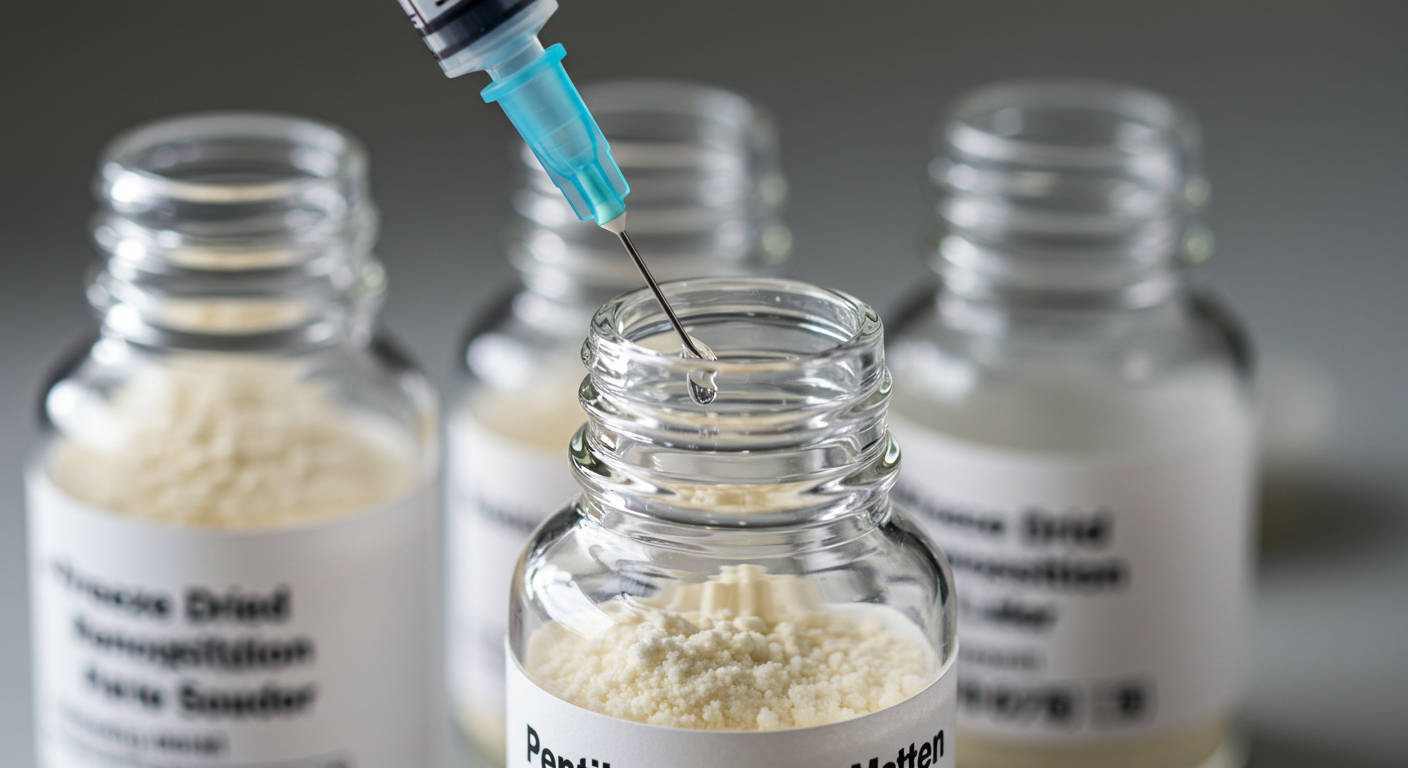The Hero Research Blog
How to Reconstitute Peptide Powder Safely and Effectively

Introduction
Reconstituting peptide powder can seem daunting at first, especially for new researchers or performance-obsessed biohackers. But with the right protocol, it’s a straightforward and crucial process that ensures your research peptides remain potent, stable, and ready for precise application. In this guide, we break down how to safely reconstitute peptide powder, what materials you need, how much water to use, and best practices for storage and stability.
This step-by-step guide is designed to align with Hero Peptides’ core values: research-backed precision, accessibility, and high-performance insight. Let’s get into it.
What You Need to Reconstitute Peptide Powder
- Bacteriostatic water (BAC water) – preserves your solution and inhibits bacterial growth
- Lyophilized (freeze-dried) peptide vial – store in a cool, dark place until use
- Insulin syringe (1mL or 3mL) – for precision and control
- Alcohol swabs – for sterilizing vial tops and surfaces
- Sterile gloves (optional but recommended)
- Clean, sanitized workspace
Step-by-Step Guide to Reconstitute Peptides
1. Sanitize Your Workspace
- Wipe down all surfaces
- Wash hands thoroughly
- Use alcohol swabs on the vial tops
2. Draw the Bacteriostatic Water
- Use a sterile insulin syringe
- Draw the volume of BAC water appropriate for your peptide concentration
3. Inject the Water Slowly
- Insert the needle into the peptide vial and let the water slide down the side of the glass
- Avoid spraying directly onto the powder — this preserves the peptide structure
4. Swirl Gently
- Do not shake the vial
- Swirl until all the powder is fully dissolved
- Some peptides may take a minute or two to dissolve completely
How Much Water Should You Use?
Here are typical reconstitution ratios:
| Peptide Amount | BAC Water Volume | Final Concentration |
|---|---|---|
| 5mg | 1mL | 5mg/mL |
| 5mg | 2mL | 2.5mg/mL |
| 10mg | 2mL | 5mg/mL |
| 10mg | 4mL | 2.5mg/mL |
Tip: Always verify ideal concentration based on your research goals and dosing protocol. View our Research Peptide Dosing Guide
Storage Tips for Reconstituted Peptides
- Store in a refrigerator (2°C–8°C or 36°F–46°F)
- Do not freeze after reconstitution
- Avoid repeated freeze-thaw cycles
- Use within 30 days unless your peptide’s stability profile suggests otherwise
Common Mistakes to Avoid
- Using tap or sterile water instead of BAC water
- Spraying BAC water directly on the powder
- Shaking the vial instead of swirling
- Forgetting to refrigerate the vial after mixing
Frequently Asked Questions (FAQs)
Q: Can I use sterile water instead of BAC water?
A: Technically yes, but BAC water is preferred for multi-dose use because it contains benzyl alcohol, which helps prevent contamination.
Q: My peptide isn’t dissolving — what should I do?
A: Some peptides take a bit longer. Swirl gently and give it a few minutes. Don’t apply heat unless explicitly recommended.
Q: Can I re-freeze a peptide after it’s been reconstituted?
A: No — this can degrade the peptide structure. Store only in the refrigerator.
Q: How long does a reconstituted peptide last?
A: Most peptides are stable for 20–30 days when stored correctly in the fridge.
Explore Research-Grade Peptides at Hero Peptides
Reconstitution is the first step toward successful research. Now that you’ve got the process down, explore our curated line of high-purity peptides — including BPC-157, TB-500, Semaglutide, and more — designed for performance-focused researchers like you.
